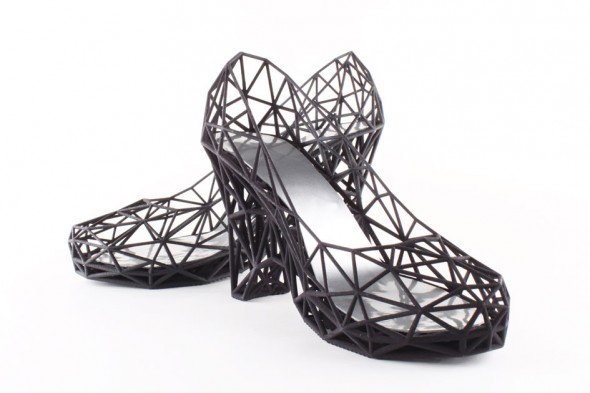
“Maybe data is the new black,” quips Mary Huang, half of the pioneering design duo Continuum. It might take a moment to wrap your head around, but she and her partner, Jenna Fizel, are onto something—and their work has been making waves across the fashion and design communities over the past few years. With the right technology and some clever algorithms, these two innovators have put their respective design and architectural minds together to develop groundbreaking new approaches to fashion with the help of an exciting emerging technology: 3D printing.
“The impact of technology on fashion, from a design perspective, is about process,” Huang explains. If you think about it, the process of fashion design itself hasn’t changed in a long time. Maybe it’s time to rethink what’s possible. Imagine fashion design without sewing, for example, without fabric or scissors. Maybe that’s what the future has in store for us.
Continuum wasn’t the first to explore 3D printing from a fashion perspective, but they’ve been on the cutting edge of its progress since inception. What makes Continuum different is that they are concerned with functionality as well as aesthetic. The first time 3D printing appeared on the fashion scene was at Amsterdam International Fashion Week, in July 2010, when Dutch fashion designer Iris van Herpen (former intern of Alexander McQueen) previewed her S/S 11 collection “Crystallization,” which included a 3D-printed piece created in collaboration with the architect Daniel Widrig and .MGX.
Before joining Continuum full-time, Huang worked as a project designer at Shapeways, a 3D printing shop headquartered in New York. She has a BA in Design and Media Arts from UCLA and an MA from the Copenhagen Institute of Interaction Design. Fizel’s background is more architectural: She holds a B.S.A.D. in Architecture from MIT. The two met while Huang was interning at Small Design Firm, Fizel’s place of work. In 2010, Continuum designed the first ever ready-to-wear 3D-printed item of clothing, in partnership with Shapeways. They wanted to start with something small, with a clear design challenge—so naturally they embarked on a bikini. The “N12,” named after the material it’s made of, Nylon 12, was designed using Rhino 3D CAD software and a specially written algorithmic script to create the structure of the 3D-printed fabric. It can be specifically designed to fit and support your shape. Individualized, comfortable and functional, it sounds like the invention of the century.
Next, Continuum forayed into footwear with their “Strvct” line. Delicate and structural, the shoe can be described as wearable art. Strvct actually represents a range of styles—from platform to pump—for unique user customization.
The D.dress is an infinite user-generated little black cocktail dress that can be designed with a software app. In truth, the “D” collection itself is actually just a piece of software. The D.dress app allows you to draw a dress and turns it into a 3D model. It then exports a cutting pattern to make the actual garment, sized to your measurements. A laser cuts the pattern out of fabric, which is then sewn into the dress. The triangulation used in the software allows everyone to create her own individual “little black dress” design.
Conceptual, fluid, and interactive designs like this might sound too lofty for the mainstream, but they are becoming a reality fast. Retail, distribution, and manufacturing could very well be on the verge of a new era due to these types of revolutionary technologies. Eventually, customers might be able to co-design and print out clothes from the comfort of their living rooms, and that day could be much closer than you think. To learn more, visit www.continuumfashion.com
Text by Michelle Oznowicz

